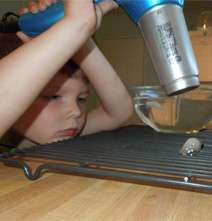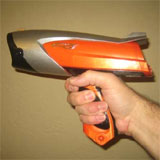
Tattoos are hardcore. Not only are they painful and expensive, they are also very difficult to get rid of. In April of 2002, my friend Tara decided to have the tattoo on her arm removed. She did some research and contacted Dr. Emil Tanghetti, at the Center for Dermatology and Laser Surgery in Sacramento. WARNING: THERE IS NO WAY A TATTOO REMOVAL GEL OR OINTMENT WORKS WELL. DON'T BUY TATTOO REMOVAL GEL OR OINTMENT |
|
 Tara
had had the rainbow triangle on her arm for almost 10 years. She paid $65
for the multi-colored tattoo in 1993, a time when teal was in, gay rainbows
were big, and Tara came out. Tara
had had the rainbow triangle on her arm for almost 10 years. She paid $65
for the multi-colored tattoo in 1993, a time when teal was in, gay rainbows
were big, and Tara came out.
Tara's style continued to evolve, but her tattoo was stuck in 1993. She started to prefer having it hidden, and began to get comments about it from friends. |
|
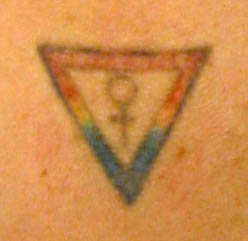
Tara's first three trips to the Center for Dermatology and Laser Surgery went well, so she invited me along on the next visit, knowing that I would love seeing the process in action. Tara's tattoo was uniquely suited to a study of laser removal, because it has so many colors. I'd heard that with laser surgery, black, blue and dark green tattoos respond the best to laser removal, while red, orange, yellow, beige and white inks are more stubborn. |
|
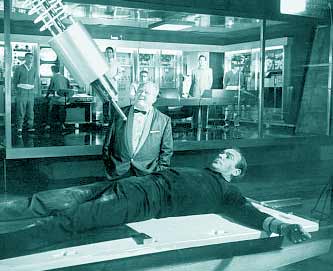
How did tattoos and lasers first come together? Was the top scientist for the Hell's Angels taking a break from methamphetamine synthesis? Did one of the guys from MIT fall for a bad girl from Wellesley? The reason that tattoos and lasers finally came together is that people have already tried everything else.
|
|
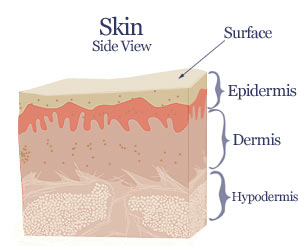 Skin
is one of my favorite organs, and it can mostly take care of
itself. It is made up many different layers, divided into three
basic areas, the epidermis, the dermis, and the hypodermis. Skin
is one of my favorite organs, and it can mostly take care of
itself. It is made up many different layers, divided into three
basic areas, the epidermis, the dermis, and the hypodermis.
|
|
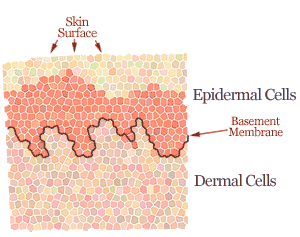
The Epidermis is constantly renewing itself from the bottom up. Stem cells create new skin cells at the bottom of the epidermis, pushing the older cells up towards the surface. At the surface, the oldest cells die and flake off. This mechanism works to make any surface ink, even a Sharpie moustache, eventually wear off. |
|
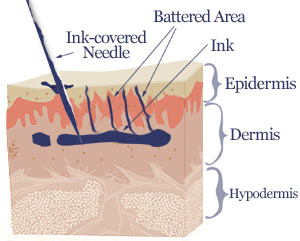
Tattoos are made of ink poked deeper into the skin, past the basement membrane, into the dermis. |
|
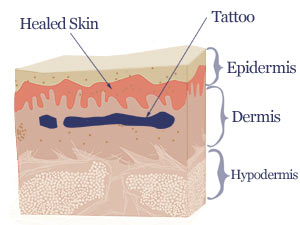 Foreign
objects that penetrate deep into the skin are usually hauled away by the
white blood cells, but ink molecules are too big for them to get their
little mouths around, so ink generally stays around for decades. Foreign
objects that penetrate deep into the skin are usually hauled away by the
white blood cells, but ink molecules are too big for them to get their
little mouths around, so ink generally stays around for decades.
Tattooing with a needle is an old technique, and it works very well. The tricky part is getting the ink out while the tattooee is still alive. There is a layer of skin protecting the tattoo, and the only way to get to that ink is to go through the skin. Many methods of tattoo removal that have been tried over the centuries, including, but not limited to:
|
|
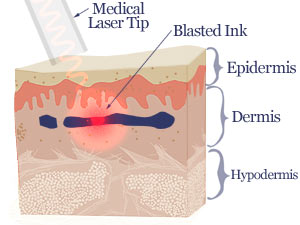
As early as the 1960s, doctors have been using lasers to burn tattoos out. The first lasers burned either too well or not well enough, leaving either big scars or baked ink. In 1965, Doctor Leon Goldman documented the earliest report of tattoo pigment interaction with short-pulsed lasers. He worked with lasers in many medical fields, until 1992 when his engineer was fatally electrocuted. Luckily many other people had taken up the laser gauntlet by then. A well-tuned laser promised what everyone was looking for: It was a way to blast apart the ink molecules without burning or cutting big chunks of neighboring skin. |
|
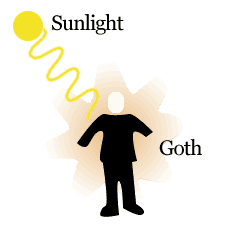
If light energy is directed toward a material, that material will either reflect, transmit or absorb the energy. This is why it can be so miserable to wear black on a hot day. The black cloth absorbs much more energy than white cloth. |
|
|
The advantage of laser light is that it can be very specifically tuned to shine through the skin cells. Melanin and water, major components of skin cells, let the laser light right though, but dark inks absorb this energy, heating up and disintegrating into tiny particles.
|
|
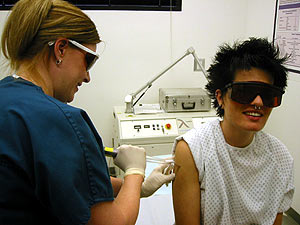
On October 22nd, 2002, Tara went in for her fourth tattoo removal session, and I came along with her. The procedure took place in a small, private room at the clinic. Two lasers were utilized by Shea on Tara's tattoo: First, The Q-switched Nd:YAG laser was used on the red and orange parts of the tattoo Q-switched is the term for lasers that use a shutter mechanism to quickly release a large dose of energy. Nd:YAG is the initials of the material that filters light inside the laser: neodymium: yttrium-aluminum-garnet: Y3Al5O12, doped with Nd3+ |
|
|
Please read Page Two of Tattoo Removal |
|



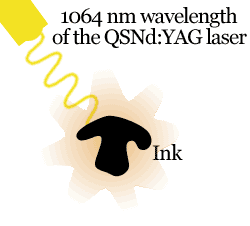 Under
the skin, dark inks absorb light energy, but the skin absorbs it too.
Under
the skin, dark inks absorb light energy, but the skin absorbs it too.
